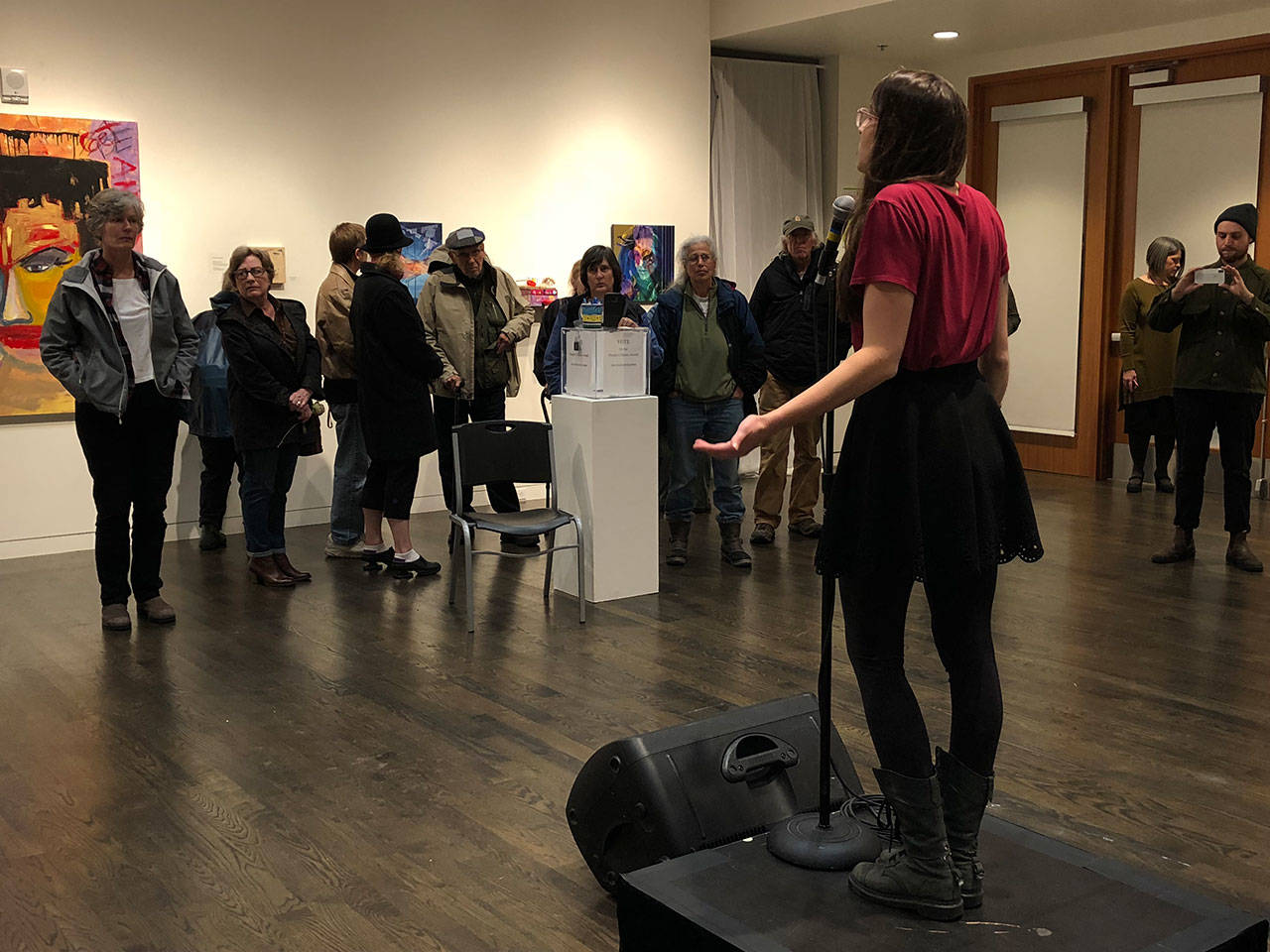In a cruel twist of timing no one could have anticipated, Vashon Center for the Arts opened its long-planned exhibition of artworks referencing the #MeToo movement last Friday night.
It was, of course, the same dismal day that the U.S. Senate voted to make it all but certain that Brett Kavanaugh, a man accused by multiple women of sexual assault, would receive a lifetime appointment to the Supreme Court. The next day, the decision was final, and the deed was done.
For all who had believed Christine Blasey Ford’s compelling, detailed and terrified testimony against Kavanaugh, the Senate’s action was a punch to the gut. For survivors of sexual assault, it may well have been something much worse.
There seemed, then, nothing else to do on Friday evening, except turn off the news and head to VCA’s Koch Gallery, to see “#MyMeToo,” featuring works by islanders that add to the agonized national and global conversation about sexual assault, harassment and abuse.
Arriving at the arts center, gallery-goers found the doors to the exhibit closed and covered with a large trigger warning, stating that the show contained mature content that dealt with trauma. The warning went on to describe coping techniques for those who might become emotionally overwhelmed by the show.
But still, many took a deep breath, opened the door, and went in anyway.
Those who love art always hope that it will somehow heal them.
Inside, viewers moved slowly through the gallery, gazing at the works in order, quietly, contemplatively, and even devotionally, as if they were circling the stations of the cross.
What they saw is an exhibit that is both heartbreaking and exhilarating, filled with art that conveys cries of pain but also howls of defiance. Several of the artworks are accompanied by statements that detail the artists’ own experiences with sexual assault.
A large, close-up self-portrait by Terry Smith contains broad, rageful slashes of brushwork and the words, “Angry” and “No Silence,” scrawled across the canvas in blood-red paint.
Cyra Jane’s contribution to the show, “I, the other,” is a sharp and dangerous looking assemblage made with salvaged paintings and metal that she created in response to her relationships with abusive men.
Other works reference literature and art history, reminding the viewer of a long arc of suffering that has stretched across the ages.
Rachel LordKenaga’s painting, “head above water, barely (Ophelia 6)”, is part of a series that examines Shakespeare’s tragic character and her modern counterparts who have been driven to grief and madness by violence.
Bella Ormseth’s meticulous oil painting, “Susanna and the Elders,” is a modern take on the Old Testament story of Susanna, an abused, discredited woman — a tale that has inspired many other artists through the centuries, including Artemisia Gentileschi, a painter of the Italian Baroque period who was herself a victim of rape. (The best thing about the Susanna story is that her tormentors were eventually brought to justice. Look it up in the Catholic Bible; Martin Luther axed it from the Protestant version.)
Works by Mara L’Mehr and Kathleen Kinney depict the aching vulnerability of children.
The political becomes intensely personal in Tami Brockway Joyce’s sound installation, which features the sometimes too familiar-sounding voices of island residents, young and old, giving their own testimony about how they survived unspeakable acts.
And there’s more — searing works by Heidi Stair, Alexa Dyan Moncrief, Britt Freda, Karina Simons and Monica Gripman are also included in the show.
It’s all heavy, tough stuff, but the exhibit is a must-see for anyone who believes that art matters, that it can silently endure as it exposes ancient wrongs, and yes, that it even has the power to heal and enlighten even the most broken and degraded human heart.


